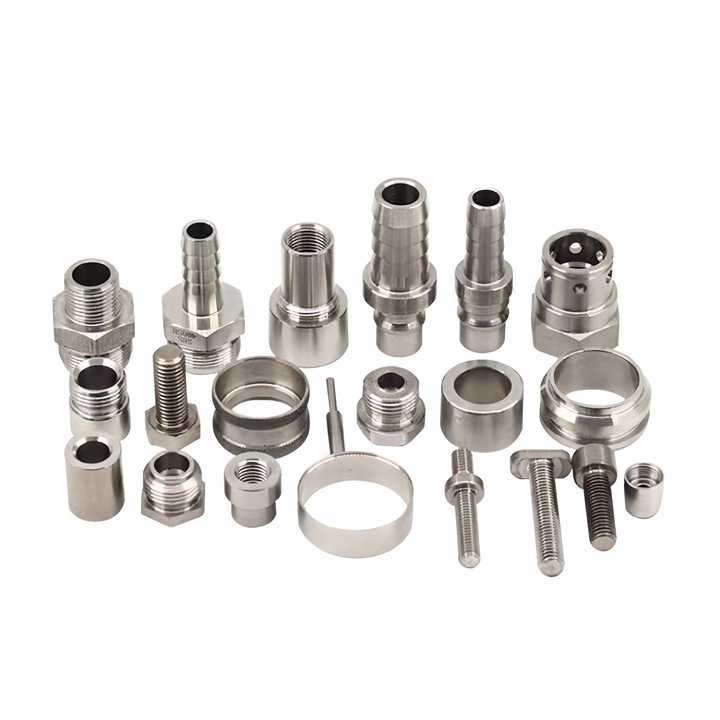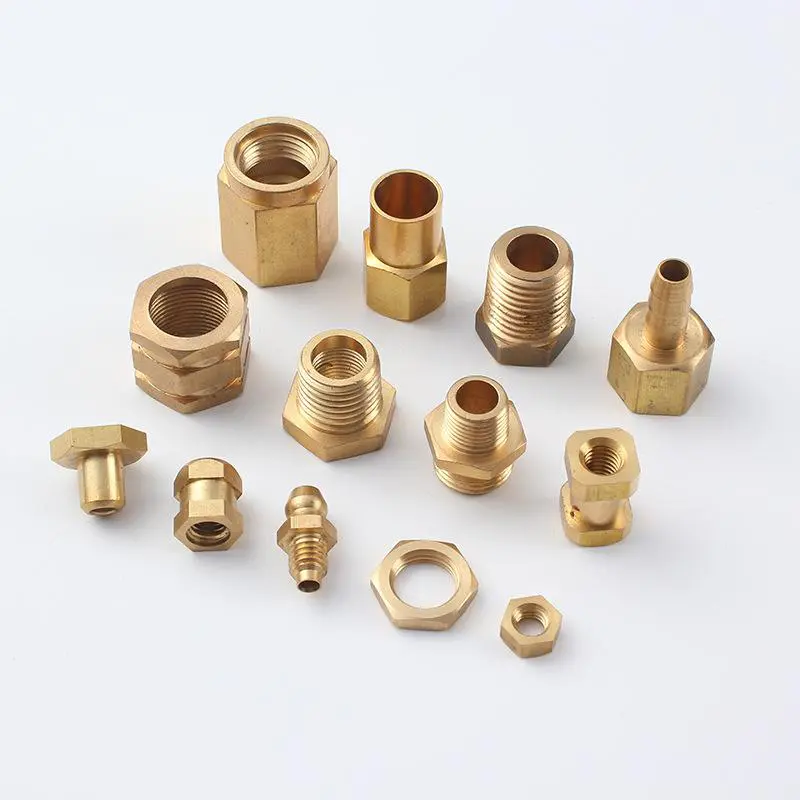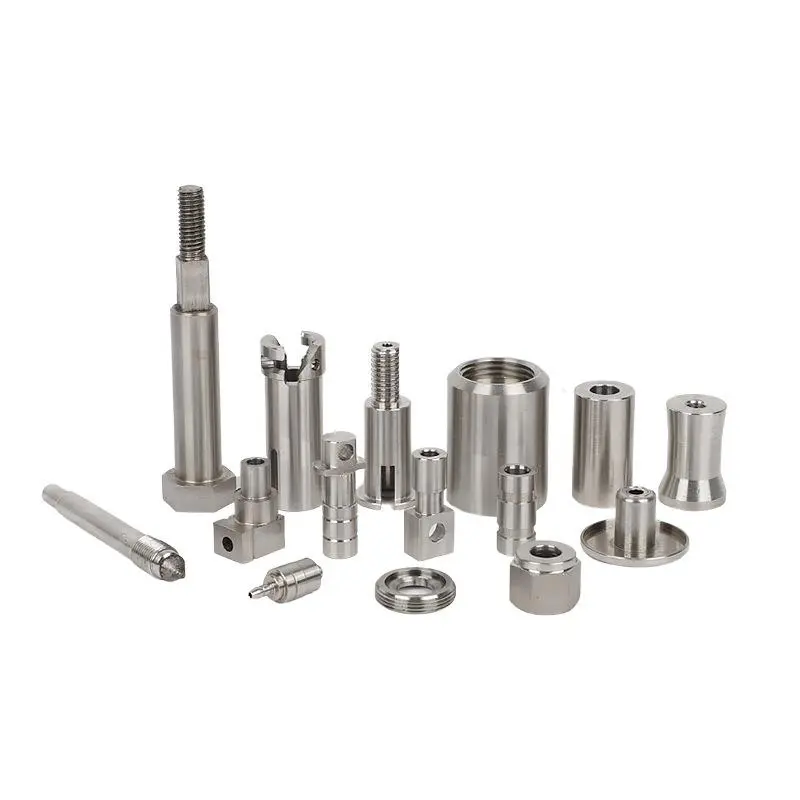Best Practices for Designing CNC Swiss Machined Aluminum Parts: A Comprehensive Guide
Published Time:
2025-11-15
Best Practices for Designing CNC Swiss Machined Aluminum Parts
When it comes to manufacturing precision components, **CNC Swiss machining** has emerged as a highly effective method, particularly for **aluminum parts**. This process combines the accuracy of CNC technology with the efficiency of Swiss-style lathes, making it an ideal choice for producing complex geometries and intricate designs. In this article, we will explore the best practices for designing CNC Swiss machined aluminum parts that not only meet but exceed industry standards.
Table of Contents
1. Understanding CNC Swiss Machining
2. Material Selection for Aluminum Parts
3. Designing for Manufacturability
4. Understanding Tolerances and Finish Requirements
5. Tooling and Fixtures: Key Considerations
6. Common Design Mistakes to Avoid
7. Prototyping and Testing: The Importance of Iteration
8. Maintaining Quality Control Throughout the Process
9. Conclusion
10. FAQs
Understanding CNC Swiss Machining
CNC Swiss machining is a **subtractive manufacturing process** that allows for the creation of highly precise and intricate components. This technique utilizes a sliding headstock to feed the material into the cutting tools, resulting in superior accuracy and the ability to work with complex geometries. The unique capabilities of CNC Swiss lathes make them particularly well-suited for aluminum parts, as they reduce waste and improve cycle times.
The **CNC Swiss machining process** is especially beneficial when working with small-diameter parts, which are commonly found in industries such as **aerospace**, **automotive**, and **medical devices**. By understanding the fundamentals of this process, designers can better tailor their designs to leverage the capabilities of CNC Swiss machining.
Material Selection for Aluminum Parts
Choosing the right material is crucial in the design of CNC Swiss machined aluminum parts. Aluminum alloys are favored for their lightweight nature, excellent machinability, and resistance to corrosion. Some popular aluminum alloys for CNC machining include:
- **6061 Aluminum**: Known for its strength and versatility, this alloy is widely used in various applications, from automotive components to structural frames.
- **7075 Aluminum**: This alloy offers superior strength and is often used in aerospace applications, where performance is critical.
- **2024 Aluminum**: Renowned for its fatigue resistance, this alloy is ideal for parts that will undergo significant stress.
When selecting an aluminum alloy, it is essential to consider the specific performance requirements of your design. Factors such as weight, strength, corrosion resistance, and thermal conductivity should all influence your material choice.
Designing for Manufacturability
Designing for manufacturability (DFM) is a critical aspect of CNC Swiss machining. By considering the manufacturing process during the design phase, you can create parts that are easier and more cost-effective to produce. Here are some best practices to keep in mind:
1. Simplify Designs
Complex designs can lead to increased production costs and longer lead times. Aim for simplicity by reducing the number of features and elements in your design. This will not only make the part easier to manufacture but also enhance its overall performance.
2. Optimize Geometry
Utilize geometric shapes that are easy to machine, such as **cylinders**, **spheres**, and **prisms**. Avoid overly intricate designs that may require excessive tooling or specialized operations.
3. Design for Tolerances
Specify realistic tolerances that can be achieved through CNC machining. Understanding the capabilities of your chosen material and machining process will help you set achievable goals for tolerances.
Understanding Tolerances and Finish Requirements
Tolerances play a vital role in the functionality of machined parts. They define the acceptable limits of deviation from a specified dimension. In CNC Swiss machining, it is important to consider the following points:
1. Specify Tolerances Clearly
Use clear and concise language when specifying tolerances in your drawings. Indicate whether the tolerances are bilateral or unilateral, and include any relevant notes to clarify your intentions.
2. Understand Surface Finish
Surface finish can significantly affect the performance and aesthetics of a part. Common surface finish requirements include **Ra (roughness average)**, which measures the average surface roughness. Determine the necessary finish based on your application, balancing aesthetics with performance requirements.
Tooling and Fixtures: Key Considerations
The effectiveness of CNC Swiss machining largely depends on the tooling and fixtures used during production. Here are key considerations to ensure optimal results:
1. Select the Right Cutting Tools
Choose cutting tools made from high-quality materials, such as carbide or high-speed steel, to ensure durability and precision. Tool geometry should be optimized for the specific aluminum alloy being machined.
2. Invest in Proper Fixtures
Fixtures are essential for securing parts during machining. They must be designed to hold parts firmly and accurately, minimizing the risk of movement during the machining process. Consider modular fixtures that can be easily adjusted for different part designs.
3. Regular Tool Maintenance
Implement a regular maintenance schedule for your cutting tools to ensure they remain sharp and effective. Dull tools can lead to increased cycle times and poor surface finish.
Common Design Mistakes to Avoid
While designing CNC Swiss machined aluminum parts, certain pitfalls can hinder the manufacturing process. Here are some common mistakes to avoid:
1. Ignoring the Manufacturing Process
Failing to consider the capabilities of CNC Swiss machining during the design phase can result in unmanufacturable parts. Always keep the machining process in mind when designing components.
2. Overcomplicating Designs
Complex designs can lead to increased costs and longer production times. Simplify your designs whenever possible to enhance manufacturability.
3. Failing to Communicate Tolerances
Vague or unclear tolerance specifications can lead to misunderstandings and errors during production. Clearly communicate all tolerances in your design documentation.
Prototyping and Testing: The Importance of Iteration
Once your design is complete, it's crucial to create prototypes and conduct thorough testing. Prototyping allows you to identify potential issues and make necessary adjustments before mass production. Consider the following steps:
1. Create Functional Prototypes
Utilize rapid prototyping techniques to create functional prototypes of your designs. This will help you evaluate performance and identify any design flaws.
2. Conduct Rigorous Testing
Test your prototypes under real-world conditions to ensure they meet performance expectations. Pay attention to aspects such as strength, durability, and precision.
3. Gather Feedback and Iterate
Collect feedback from testing and use it to refine your designs. Iteration is key to achieving the best possible outcome for your CNC Swiss machined aluminum parts.
Maintaining Quality Control Throughout the Process
Quality control is essential in the CNC Swiss machining process to ensure that each part meets the required specifications. Implement the following practices:
1. Monitor Production Processes
Utilize advanced monitoring tools to track production processes in real-time. This allows for immediate identification of any issues that may arise.
2. Perform Regular Inspections
Conduct regular inspections of both the machining process and the finished parts. This will help maintain high-quality standards throughout production.
3. Document Quality Control Procedures
Maintain thorough documentation of your quality control procedures for future reference. This ensures consistency and accountability within your manufacturing processes.
Conclusion
Designing CNC Swiss machined aluminum parts requires a comprehensive approach that encompasses material selection, DFM principles, tolerances, and quality control. By following best practices and avoiding common pitfalls, you can create high-quality components that meet industry standards and perform reliably in their intended applications. Embrace the intricacies of CNC Swiss machining, and leverage the insights gained from this guide to enhance your design processes and ultimately achieve manufacturing success.
FAQs
1. What is CNC Swiss machining?
CNC Swiss machining is a manufacturing process that utilizes computer numerically controlled lathes to produce high-precision parts from bar stock, especially effective for small and complex geometries.
2. What aluminum alloys are best for CNC machining?
Popular aluminum alloys for CNC machining include 6061, 7075, and 2024, each offering unique properties suited for different applications.
3. How do I ensure my designs are manufacturable?
Focus on simplicity, optimize geometry, and specify realistic tolerances to enhance the manufacturability of your designs.
4. What are the common design mistakes to avoid?
Common mistakes include ignoring the manufacturing process, overcomplicating designs, and failing to communicate tolerances clearly.
5. Why is prototyping important in the design process?
Prototyping allows for testing and validation of designs before mass production, helping to identify potential issues and make necessary adjustments.
Previous Page
Previous Page
NewsCenter
Beijing Pafinal Precision Machinery Co., Ltd.
Email:sales@pafinal.com

Address: No. 239 Huanhe South Road, Tianjin Pilot Free Trade Zone (Airport Economic Zone), Tianjin
中企跨境-全域组件
制作前进入CSS配置样式
sales@pafinal.com:
Whatsapp:
在线客服添加返回顶部
图片alt标题设置: PAFINAL
表单验证提示文本: Content cannot be empty!
循环体没有内容时: Sorry,no matching items were found.
CSS / JS 文件放置地




 2025-11-15
2025-11-15


